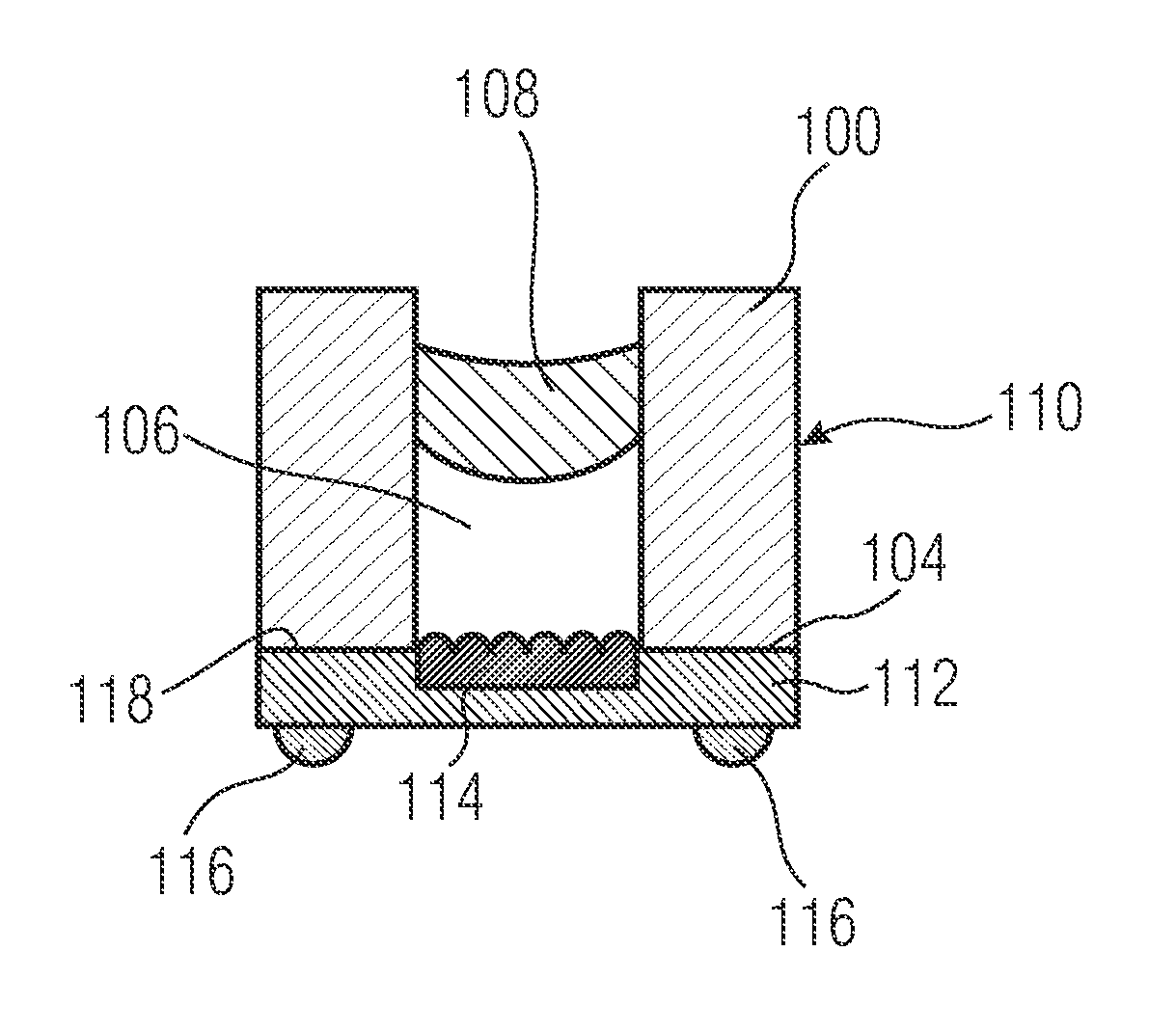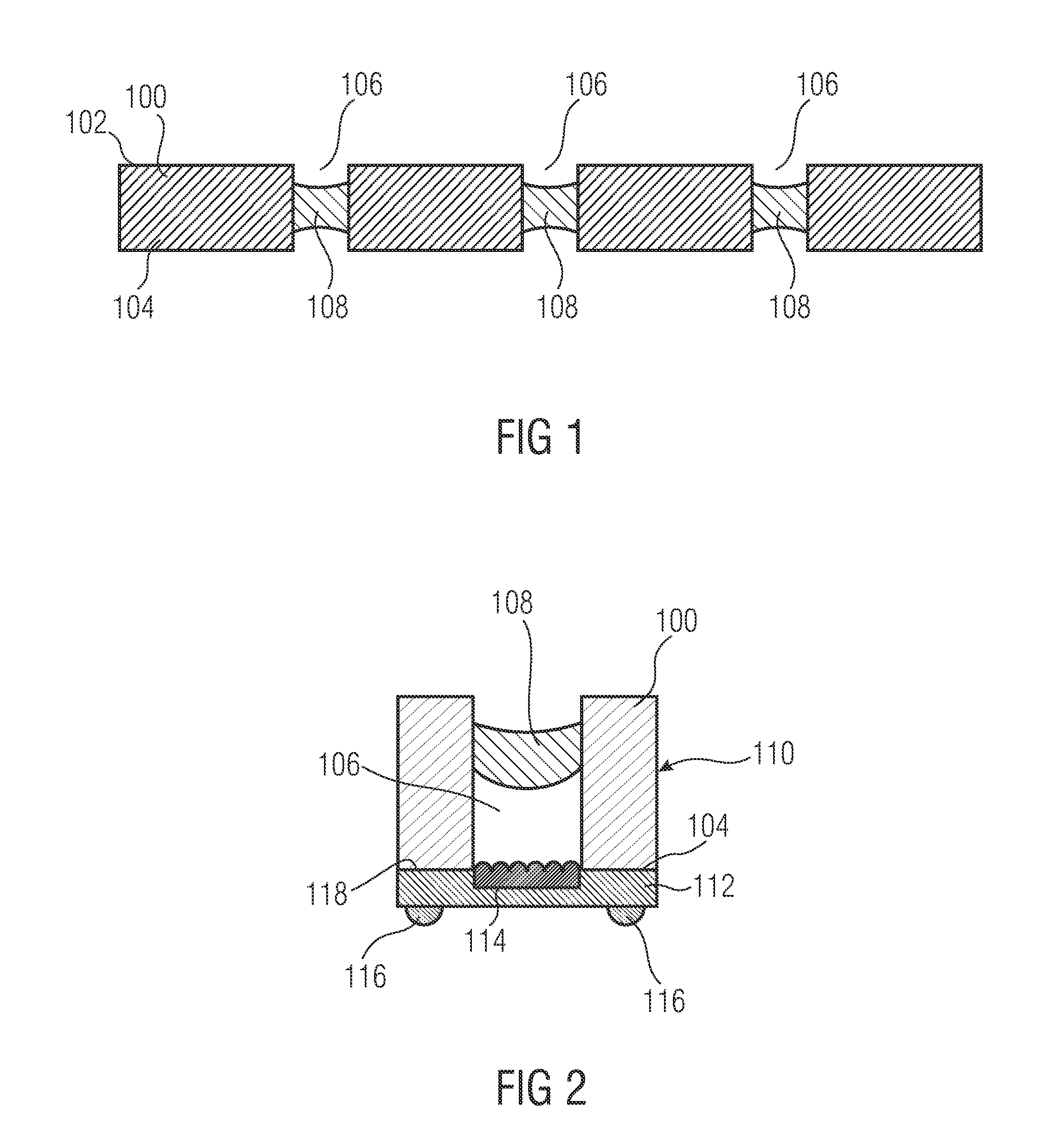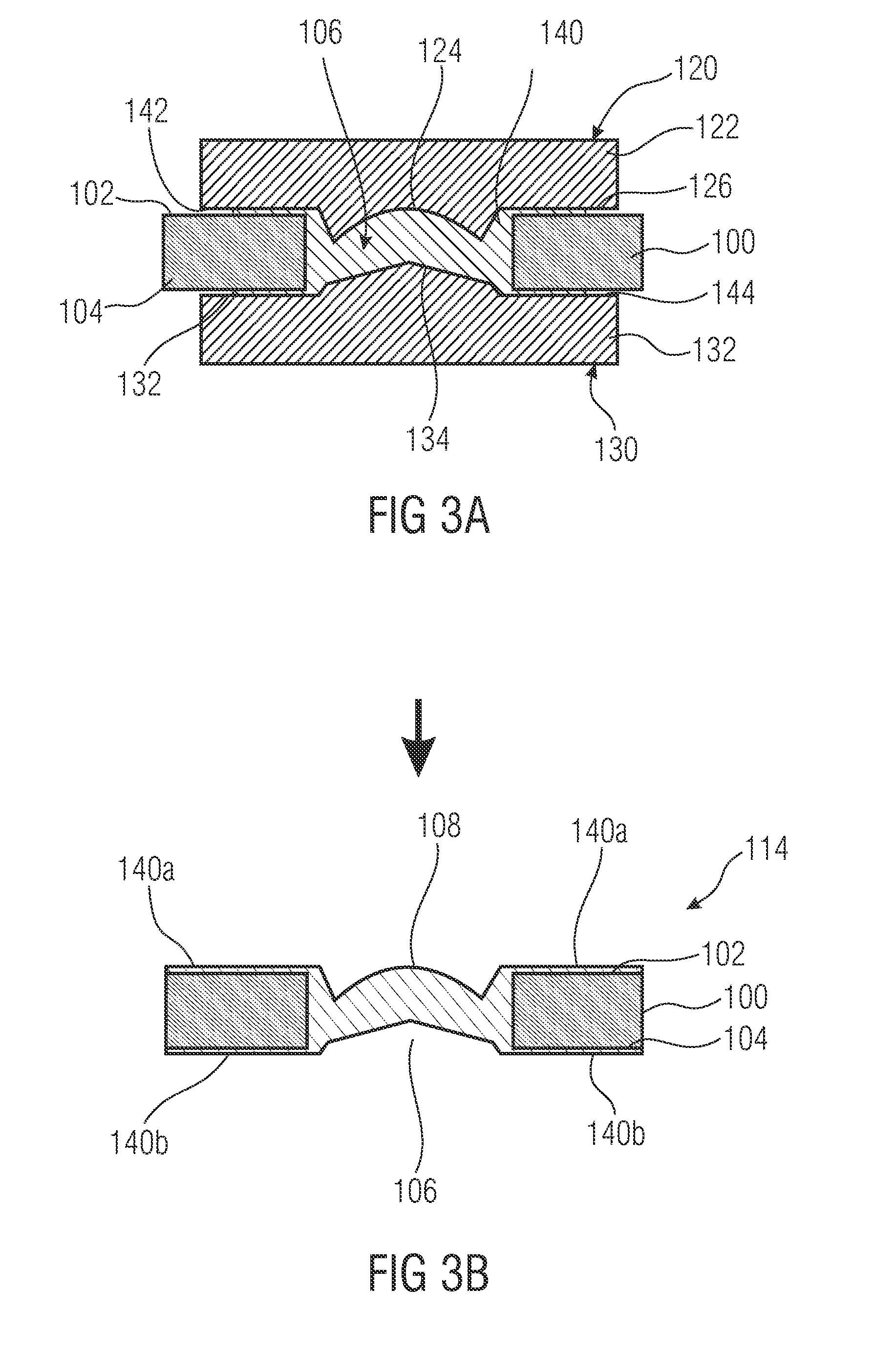Lens and method for manufacturing same
a technology of optical systems and lenses, applied in the field of optical systems, can solve the problems of reducing image quality, poor optical performance, and reducing image quality, and achieve the effects of reducing or completely avoiding aberration astigmatism, simple design, and reducing the cost of the optical system
- Summary
- Abstract
- Description
- Claims
- Application Information
AI Technical Summary
Benefits of technology
Problems solved by technology
Method used
Image
Examples
Embodiment Construction
[0037]FIG. 1 illustrates an array of lenses in accordance with an embodiment of the invention. The lens array comprises a substrate or wafer 100 comprising two opposed main surfaces 102 and 104. The wafer 100 comprises a plurality of recesses 106 extending from the first surface 102 to the second surface 104 of the wafer 100, thereby defining a hole or opening through the wafer 100, also termed as cavity or spacer cavity. Within each recess or cavity 106 a lens structure 108 is arranged having the desired lens surfaces, in the embodiment shown in FIG. 1 a bi-concave lens. Alternatively, the lens structure 108 might have any desired type, e.g. a bi-convex lens, a plano-concave lens, a plano-convex lens or a meniscus. The lens structure 108 is formed of lens material and dependent from the desired characteristics the lens structure 108 may be formed by one or more layers of lens material. In case of using a plurality of layers of lens material dependent from the desired optical charac...
PUM
| Property | Measurement | Unit |
|---|---|---|
| Thickness | aaaaa | aaaaa |
| Shape | aaaaa | aaaaa |
Abstract
Description
Claims
Application Information
 Login to View More
Login to View More - R&D
- Intellectual Property
- Life Sciences
- Materials
- Tech Scout
- Unparalleled Data Quality
- Higher Quality Content
- 60% Fewer Hallucinations
Browse by: Latest US Patents, China's latest patents, Technical Efficacy Thesaurus, Application Domain, Technology Topic, Popular Technical Reports.
© 2025 PatSnap. All rights reserved.Legal|Privacy policy|Modern Slavery Act Transparency Statement|Sitemap|About US| Contact US: help@patsnap.com



